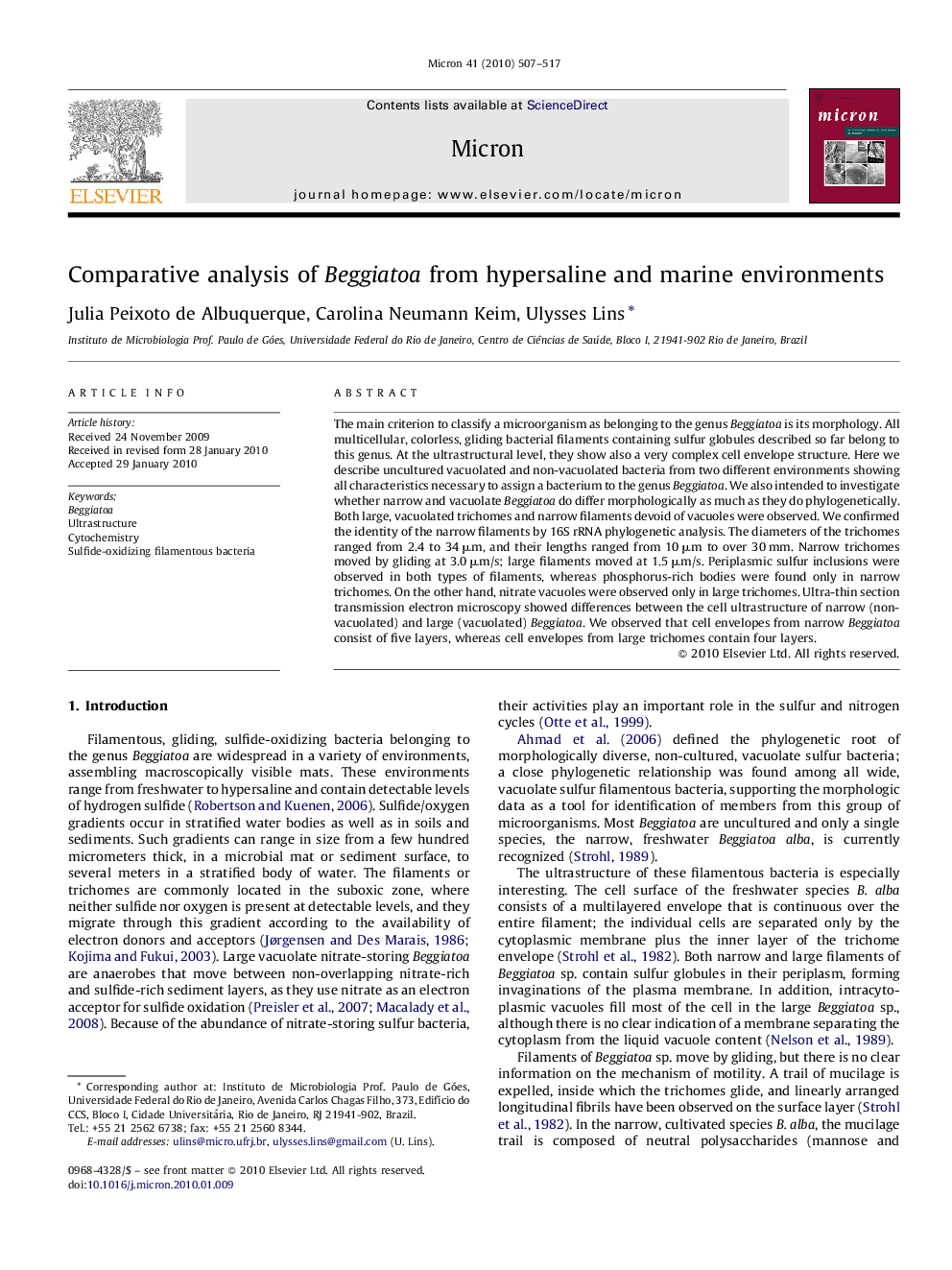| Article ID | Journal | Published Year | Pages | File Type |
|---|---|---|---|---|
| 1589476 | Micron | 2010 | 11 Pages |
Abstract
The main criterion to classify a microorganism as belonging to the genus Beggiatoa is its morphology. All multicellular, colorless, gliding bacterial filaments containing sulfur globules described so far belong to this genus. At the ultrastructural level, they show also a very complex cell envelope structure. Here we describe uncultured vacuolated and non-vacuolated bacteria from two different environments showing all characteristics necessary to assign a bacterium to the genus Beggiatoa. We also intended to investigate whether narrow and vacuolate Beggiatoa do differ morphologically as much as they do phylogenetically. Both large, vacuolated trichomes and narrow filaments devoid of vacuoles were observed. We confirmed the identity of the narrow filaments by 16S rRNA phylogenetic analysis. The diameters of the trichomes ranged from 2.4 to 34 μm, and their lengths ranged from 10 μm to over 30 mm. Narrow trichomes moved by gliding at 3.0 μm/s; large filaments moved at 1.5 μm/s. Periplasmic sulfur inclusions were observed in both types of filaments, whereas phosphorus-rich bodies were found only in narrow trichomes. On the other hand, nitrate vacuoles were observed only in large trichomes. Ultra-thin section transmission electron microscopy showed differences between the cell ultrastructure of narrow (non-vacuolated) and large (vacuolated) Beggiatoa. We observed that cell envelopes from narrow Beggiatoa consist of five layers, whereas cell envelopes from large trichomes contain four layers.
Keywords
Related Topics
Physical Sciences and Engineering
Materials Science
Materials Science (General)
Authors
Julia Peixoto de Albuquerque, Carolina Neumann Keim, Ulysses Lins,
